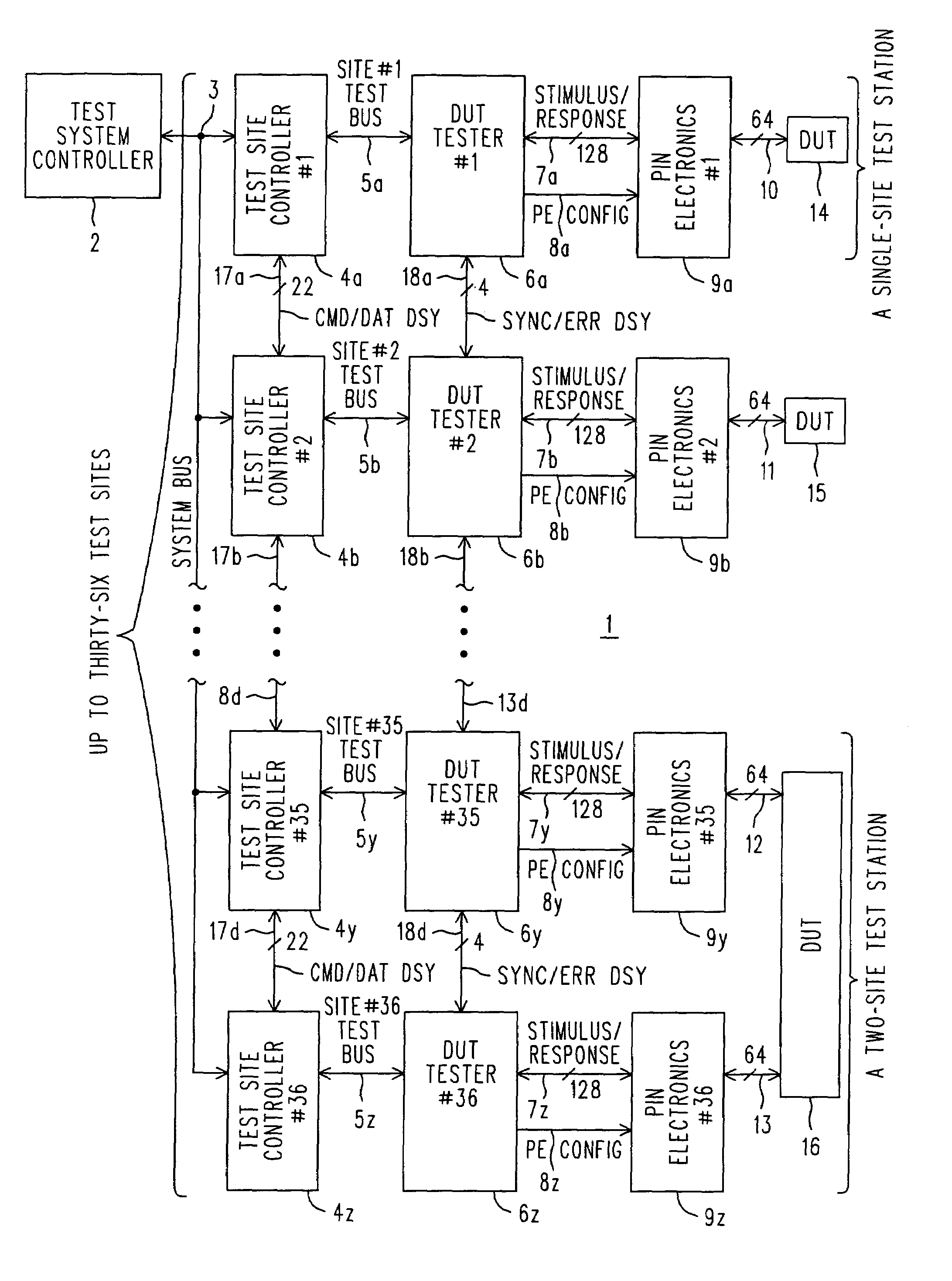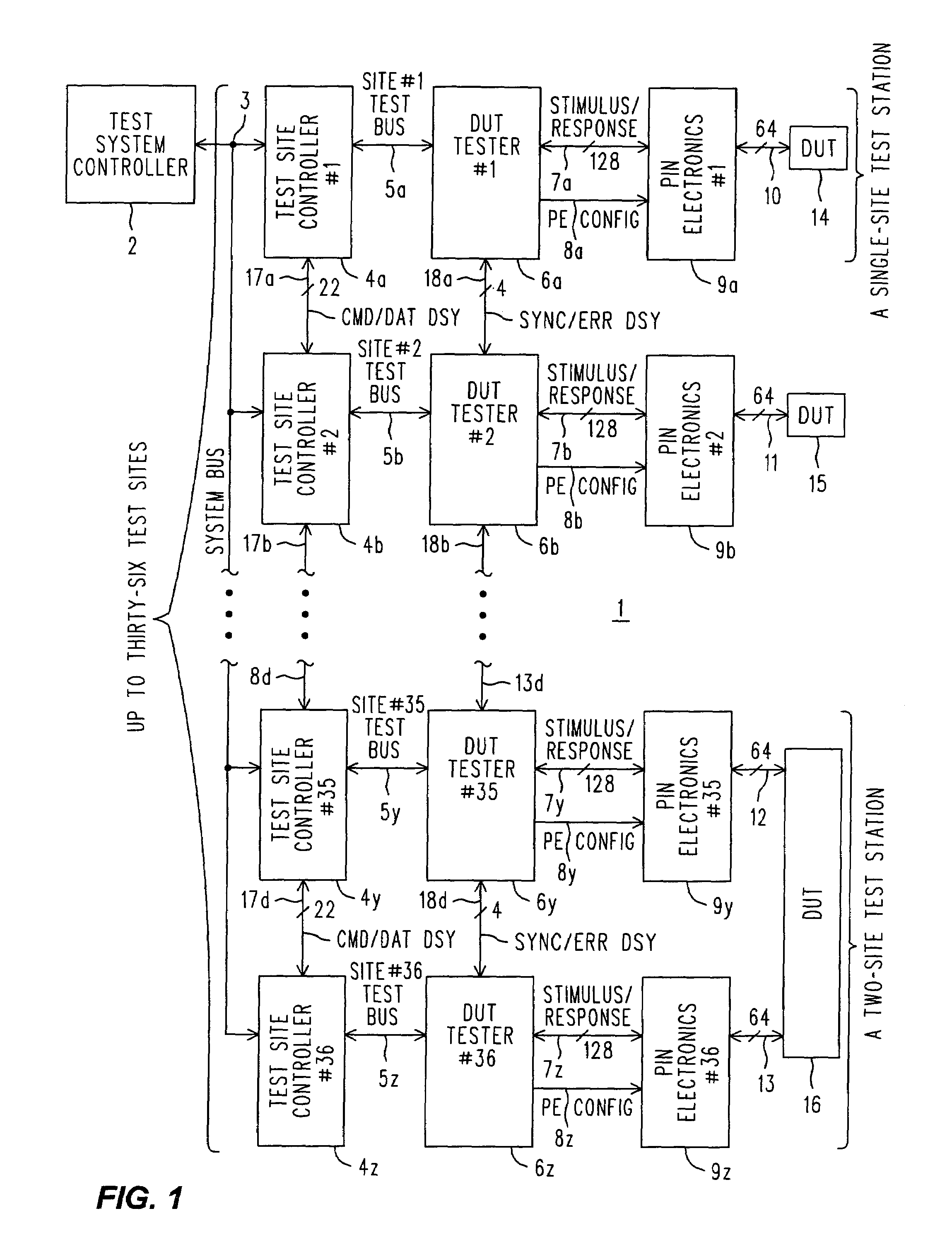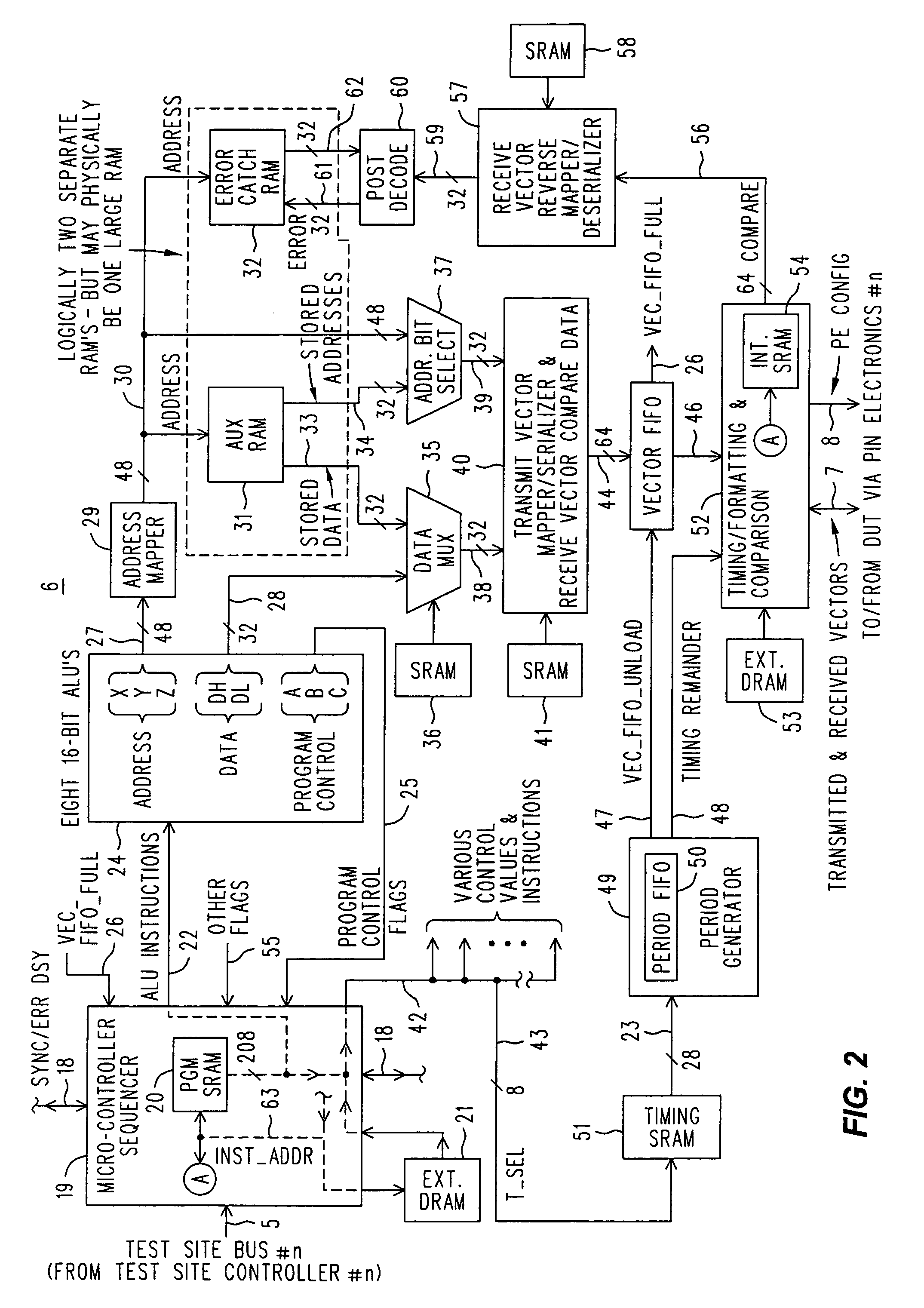Memory tester uses arbitrary dynamic mappings to serialize vectors into transmitted sub-vectors and de-serialize received sub-vectors into vectors
a memory tester and dynamic mapping technology, applied in the field of memory testers, can solve the problems of reducing the overall lifetime performance of parts, affecting the algorithmic representation of vectors to be serialized, and inadequate notion of static mapping for conceptualized vectors
- Summary
- Abstract
- Description
- Claims
- Application Information
AI Technical Summary
Benefits of technology
Problems solved by technology
Method used
Image
Examples
Embodiment Construction
set out below that arbitrary dynamic mappings can simultaneously solve the crossing pin problem, even as they also serve to serialize and de-serialize the movement of sub-vectors out of and into full sized vectors.
[0014]Thus, by using a compiler that understands arbitrary dynamic mapping definitions and a memory tester that implements them, test engineers can write algorithmically streamlined test programs for memory devices that employ the data squeezing technique described above. In the embodiment to be described the necessary sub-vector operations are performed automatically as a result of their definition and subsequent invocation, and the programmer need not write code that would otherwise treat each sub-vector as a complete vector in its own right. The compiler should also be compatible with programming constructs for the earlier non-arbitrary dynamic mappings, so that older test programs will still run on new equipment.
BRIEF DESCRIPTION OF THE DRAWINGS
[0015]FIG. 1 is a simpli...
PUM
 Login to View More
Login to View More Abstract
Description
Claims
Application Information
 Login to View More
Login to View More - R&D
- Intellectual Property
- Life Sciences
- Materials
- Tech Scout
- Unparalleled Data Quality
- Higher Quality Content
- 60% Fewer Hallucinations
Browse by: Latest US Patents, China's latest patents, Technical Efficacy Thesaurus, Application Domain, Technology Topic, Popular Technical Reports.
© 2025 PatSnap. All rights reserved.Legal|Privacy policy|Modern Slavery Act Transparency Statement|Sitemap|About US| Contact US: help@patsnap.com



